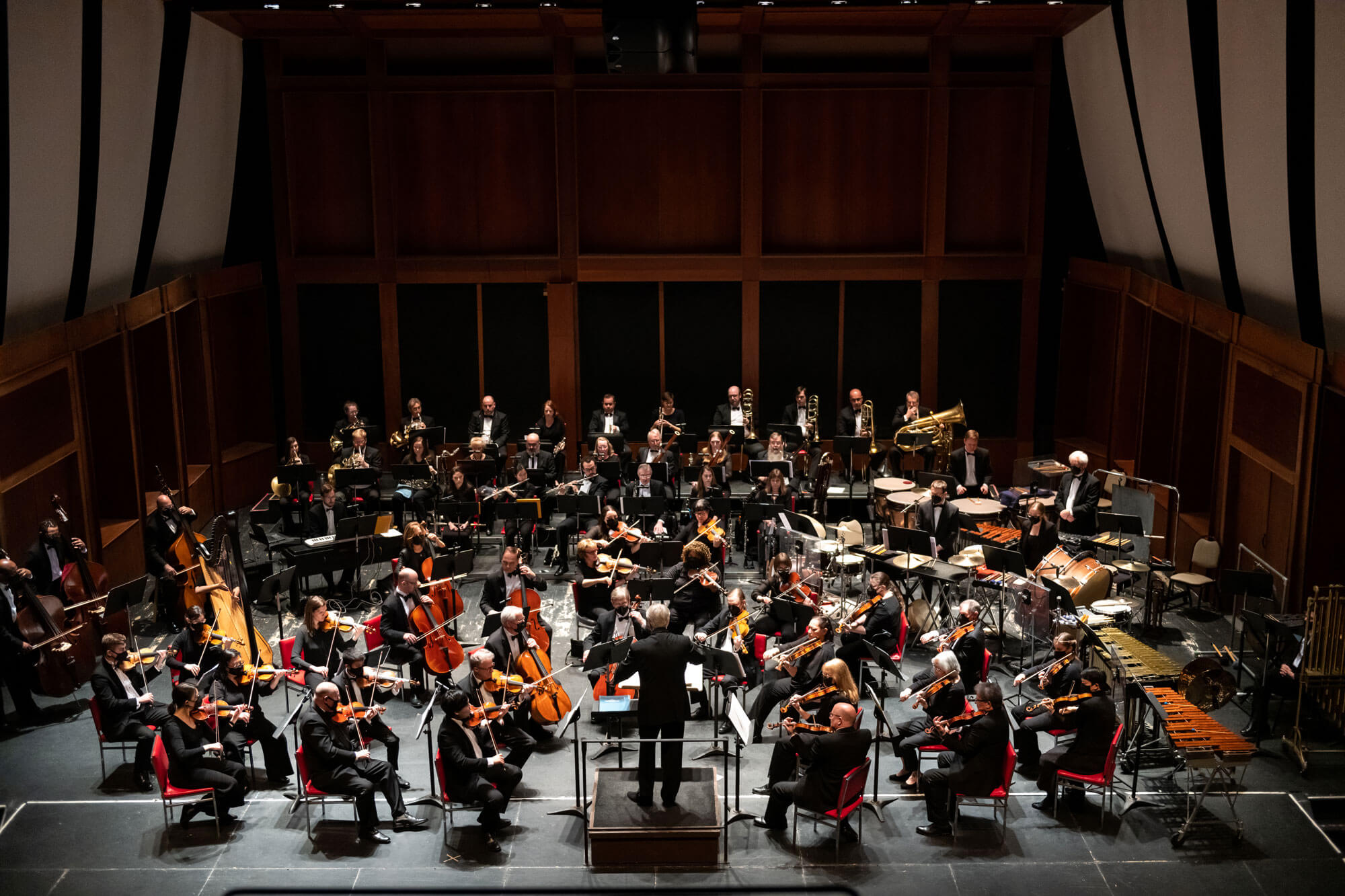Program Notes – Symphony No. 3 in A Minor, Op. 56

Symphony No. 3 in A Minor, Op. 56 (“Scottish”)
Felix Mendelssohn (1809–1847)
Written: 1829–42
Movements: Four
Style: Romantic
Duration: 38 minutes
Before Felix Mendelssohn turned fifteen, he had already written twelve symphonies! Soon after that, he produced two glittering works: his Midsummer Night’s Dream Overture and the String Octet—both permanent members of the classical repertoire. At the end of his teenage years, after he completed his “home-schooling,” his father sent Felix on a grand tour’of Europe, beginning in England and Scotland.
He and his friend Karl Klingemann visited the famed novelist Sir Walter Scott. In June they were in Edinburgh, where they took in the lore of Queen Mary and her personal secretary (and possible lover), David Rizzio. In a letter home, he described the scene:
We went to the palace of Holyrood where Queen Mary lived and loved. There is a little room to be seen there with a winding staircase leading up to it. This, the murderers ascended and, finding Rizzio, drew him out. Three chambers away is where they killed him . . . Everything is broken and moldering and the bright sky shines in. I believe I found today in the old chapel the beginning of my Scottish Symphony.
Mendelssohn and Klingemann then journeyed farther north. The Highlands “brew nothing but whiskey, fog, and foul weather,” Mendelssohn commented. By August, the friends were in Oban, on the west coast of Scotland, and on the island of Jaffa, where Mendelssohn got the inspiration for his Hebrides Overture.
By the following year, Mendelssohn was in Italy. Keeping the folks at home up to date he wrote, “The loveliest time of the year in Italy is the period from April 15 to May 15. Who then can blame me for not being able to return to the mists of Scotland? I have therefore laid aside the symphony for the present.” Actually, it was more like ten years before he got around to completing his Scottish Symphony. Meanwhile, he wrote three other symphonies. First was the Reformation Symphony (Symphony No. 5), then his Italian Symphony (Symphony No. 4), and finally the Lobegesang (Symphony No. 2). (Mendelssohn’s symphonies are numbered according to when he published them, not when he wrote them.)
When he came back to the symphony, he used the music that he wrote at Holyrood as an introduction to the first movement. It is somber and moody in character. The clarinet and violins then get to introduce the main theme of the movement, itself somewhat disquieting in mood. The theme grows into a real tempest and then dissolves into a more lyrical second melody. Solemn chords announce the development section that works with the stormier elements of both the first and second themes. An even stormier episode follows a full restatement of the principal themes. The solemn introduction returns to usher in, without any pause, the next movement.
The second movement is a blistering dance-like piece, full of barely containable joy. It proceeds directly into the slow movement. The music here alternates between a beautiful singing melody and a stern, rigorous one. Mendelssohn marks the last movement allegro guerriero—fast and warlike; however, it is not without those elfin-like moments that permeate so much of Mendelssohn’s music. The symphony ends with a joyful solemnity.
How much of Scotland can you hear in this “Scottish” symphony? Be careful! When Mendelssohn’s contemporary Robert Schumann first heard this piece, someone tricked him by saying it was the Italian symphony! Schumann was convinced: "It is so beautiful as to compensate for a hearer who has never been to Italy."
©2024 John P. Varineau
